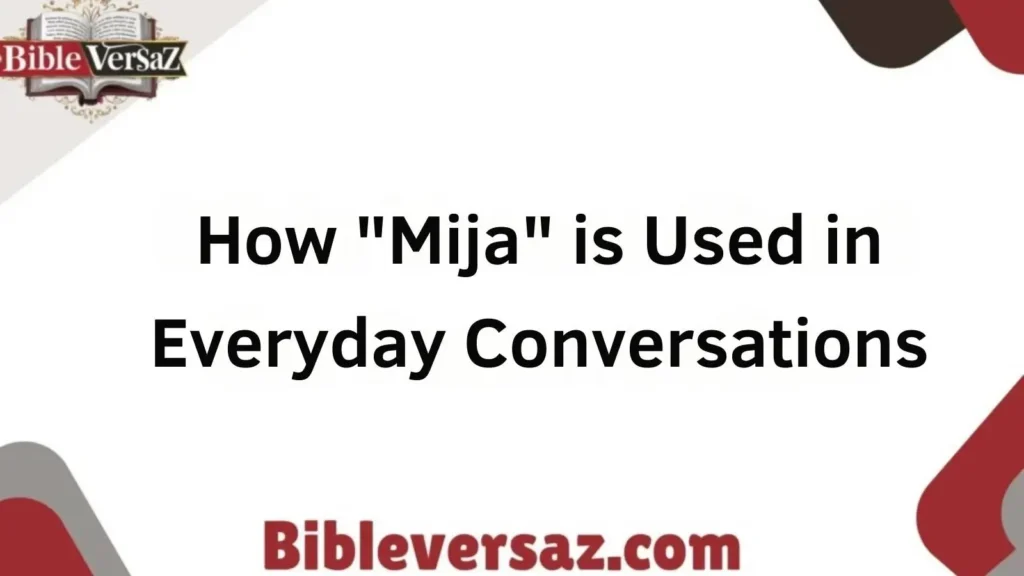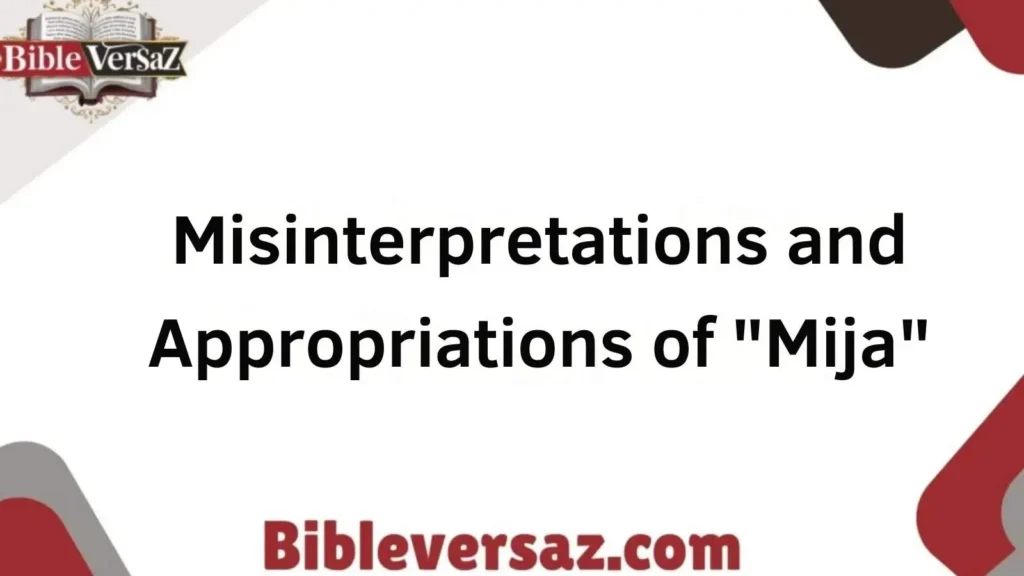Welcome! If you’re curious about the meaning of “Mija”, its fascinating origin, rich history, and how its popularity is shaping up in 2025, you’ve come to the right place.
This term, often used in Latino culture, carries deep emotional connections and has a special place in the hearts of many.
Understanding where it comes from and why it’s still widely used today can offer insights into cultural traditions and language evolution.
Whether you’re just learning about it or already familiar with it, this article will give you all the details you’re looking for.
Keep reading to discover the full story behind Mija and why it continues to be so relevant today!
What Does “Mija” Mean?
At its core, “mija” is an affectionate term in Spanish that combines the words “mi” (my) and “ja” (a diminutive form of “hija,” which means daughter).
So, “mija” essentially translates to “my daughter.” However, in practice, it is often used to express affection toward females in a warm and endearing way, even outside of familial contexts.
It’s important to note that while “mija” translates directly to “my daughter,” its usage is not always limited to someone’s biological child.
It can refer to close friends, young women, or anyone with whom you share a familial-like bond.
Breaking Down the Word: “Mi” + “Ja”
To better understand the term “mija,” let’s break it down:
- “Mi”: This translates to “my” in English. It’s a possessive adjective used to show a close connection or relationship to the person being referred to.
- “Ja”: Derived from “hija” (daughter), the “ja” part is an affectionate diminutive form. It’s used to soften the term and add warmth, much like calling someone “sweetheart” or “dear” in English.
When these two components come together, they create the affectionate term “mija.” This term carries an immense amount of emotional weight, conveying love, protection, and care.
The Cultural Context of “Mija”
In Latin American cultures, and especially in Mexico, the use of “mija” is an expression of warmth and familiarity.
It is commonly spoken by parents, grandparents, or close family members. However, its use has expanded beyond just familial relationships to include close friends and even people who aren’t directly related by blood.
“Mija” in Hispanic Culture
In many Spanish-speaking countries, such as Mexico, Colombia, and Puerto Rico, “mija” is often used to refer to young girls or women, even if they aren’t a parent’s daughter.
This broadens the scope of its use to encompass a wide range of female relationships, from friendly to romantic, always implying a deep level of affection and care.
Here are a few scenarios where “mija” might be used:
- By parents: A mother might call her daughter “mija” to show love and affection, similar to how an English-speaking parent might use “sweetheart” or “darling.”
- By friends or elders: It’s also used by older generations or close friends to show familiarity and warmth toward younger women, regardless of their actual relationship.
- In casual settings: Sometimes, it’s simply used as a term of endearment, much like “girl” or “honey” in English, especially in friendly or playful contexts.
How “Mija” is Used in Everyday Conversations

“Mija” is not reserved solely for family use; it’s often sprinkled throughout everyday conversations, particularly in informal settings.
Its tone and context can vary, but here are a few examples of how you might hear it used in conversation:
- Parent to Child:
“Mija, come help me with the dishes.”
In this context, it’s a gentle request from a mother or father to their daughter. It’s a way of giving direction while maintaining a sense of warmth. - Elder to Younger Woman:
“Mija, you’re looking so beautiful today!”
An elder might use “mija” to show admiration for a young woman, reinforcing the emotional bond between them. - Friend to Friend:
“Mija, I can’t believe we finally made it to the concert!”
Here, “mija” is used by one close friend to another, adding a sense of excitement and affection to the conversation.
Emotional Connection
The term conveys more than just a literal meaning. Calling someone “mija” communicates feelings of care, protection, and familiarity. It’s an emotional shortcut, a way of saying “I care about you deeply, and I want to show it.”
“Mija” in Popular Media and Modern Usage
The usage of “mija” has transcended its traditional boundaries, especially in pop culture. The term has gained widespread recognition thanks to its appearance in movies, TV shows, and songs.
- TV Shows & Movies:
In popular shows like Jane the Virgin or The Fosters, “mija” is used as a familiar, endearing term. Characters call each other “mija” to display familial love and emotional closeness, which resonates with the audience. - Social Media:
Influencers, musicians, and celebrities, particularly those with Latino roots, have used “mija” to connect with their audiences. It has become an expression of identity, helping younger generations embrace their heritage and culture.
One notable example is the use of “mija” in reggaeton songs, where artists like Bad Bunny and Karol G use it to refer to a woman they admire or care for.
This exposure in modern media has made the term accessible to a broader audience, even those who might not speak Spanish fluently.
The Emotional Impact of “Mija”
Why does “mija” have such an emotional pull? It’s more than just a word; it’s a symbol of nurturing, closeness, and community. When someone calls you “mija,” it feels like an embrace of affection and care, whether it’s from a mother, a mentor, or even a friend.
Consider this quote from author Sandra Cisneros, who writes in her book The House on Mango Street:
“My mother, when she calls me, says ‘Mija, come here.’ And I go to her. She’s calling me with her heart, not just her voice.”
This quote perfectly captures the essence of “mija” — it’s not just a word; it’s a gesture of emotional connection. “Mija” is an invitation to feel loved and valued.
Variations Across Latin American Countries
Although “mija” is commonly used in Mexico, its variations can be found throughout Latin America. The nuances of the term might change slightly depending on the country, but the core sentiment remains the same.
- Mexico: “Mija” is used frequently by parents, relatives, and even strangers in some cases. It’s a way of expressing affection toward a woman, regardless of her age.
- Puerto Rico: In Puerto Rican Spanish, “mija” might be heard in close-knit family settings. It can also be used more casually among friends and peers.
- Dominican Republic: Here, “mija” is often used by older women as a form of endearment toward younger women, much like “mija” would be used in other countries.
| Country | Common Use of “Mija” | Context of Use |
| Mexico | Very Common | Family and close relationships |
| Puerto Rico | Common | Family, friendly circles |
| Dominican Rep | Common | Primarily used by older women to younger girls |
“Mija” in Relation to Gender and Relationships
“Mija” is specifically used to refer to females. The male equivalent is “mijo,” a term used to refer to boys or young men, with a similar connotation of affection and care. This reflects the gendered nature of the language but also highlights the warmth shared between parents and their children, regardless of gender.
Misinterpretations and Appropriations of “Mija”

As the term “mija” becomes more widely known, some individuals outside of the Hispanic community may use it incorrectly, not fully understanding its cultural weight.
For example, using “mija” casually, without the same emotional connection, can be seen as disrespectful or insensitive.
It’s important to recognize that while “mija” is widely used within Spanish-speaking communities, using it without understanding its cultural context could be perceived as cultural appropriation or insensitivity.
To use “mija” appropriately, one must be mindful of the relationships and context that give the word its true meaning.
Conclusion
At its core, “mija“ is much more than just a translation of “my daughter.” It is a powerful expression of care, love, and emotional connection.
In a world where human connections can often feel strained, terms like “mija” provide a simple yet meaningful way to reinforce the bonds we share with the people we love.
The growing use of “mija” across cultures and in media serves as a reminder that language isn’t just about words — it’s about the feelings and intentions behind those words.
Whether used in a family setting or casually with friends, “mija” invites us to express our affection openly, warmly, and without hesitation.

Freya Hughes combines her passion for faith and love for writing to craft meaningful content that resonates with believers of all backgrounds. Her articles on BibleVersaz.com are known for their clarity, warmth, and ability to illuminate the relevance of ancient scriptures in today’s world.


